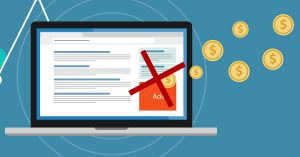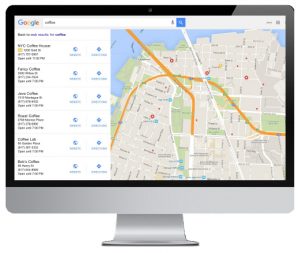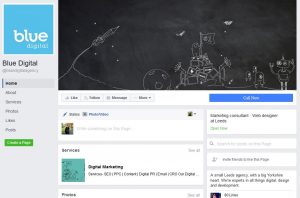So 2016 is coming to an end and its been a big year in digital marketing, with Google making a number of key changes to not only its ranking algorithm but to how the SERPs look themselves.
January
January saw 2 key factors within the digital marketing industry with a Google algorithm update and an emphasis on product reviews.
 The year started with SEO’s expecting an algorithm update and Google didn’t let them down but instead of the expected Panda or Penguin roll out Google decided to make a change to the core algorithm.
The year started with SEO’s expecting an algorithm update and Google didn’t let them down but instead of the expected Panda or Penguin roll out Google decided to make a change to the core algorithm.
The algorithm update meant that websites not only needed to continue to create great unique content but to take into account the user intent when landing on a page. This is something which should now dictate the tone of voice and on page content of landing pages.
As well as the algorithm update January saw an emphasis from Google on independent product reviews for eCommerce websites. Instead of having testimonials or a page of reviews Google wants you to get product reviews from external websites such as Trustpilot and Reevoo.
February
Towards the end of February Google rolled out the removal of Adwords ads on the right hand side of its search results pages. This move closes the gap between desktop and mobile experience, whilst putting a heavier focus on SEO.
At the time it was felt that the change wouldn’t have much impact on the searchers or businesses which where ranking highly unless Google were to introduce a 4th ad at the top of the page.
Guess what they did just 3 weeks later…..
March
That’s right just after we thought Google were giving more real estate to organic listings, they rolled out the 4 Ad just 3 weeks after the removal of the side ads. The 4th ad seems to appear more for commercial related terms but it has had a big impact on the organic search world.
The 4th ad meant that organic listings were now below the fold on majority of displays which has meant the click through rate for position 1 in the organic listings has dropped by anything up to 10% depending on the industry.
This is one of the key reasons as to why PPC should make up part of a successful digital marketing campaign.
We  also saw in the 3rd month of the year a statement a statement from Google on their webmaster tools forum announcing that they will be releasing an update to their ranking algorithm that gives mobile friendly websites a ranking boost. Back in 2015 Google said that all websites should be mobile friendly (Mobileggedon) and this update looked to add even more weight to the mobile ranking factors.
also saw in the 3rd month of the year a statement a statement from Google on their webmaster tools forum announcing that they will be releasing an update to their ranking algorithm that gives mobile friendly websites a ranking boost. Back in 2015 Google said that all websites should be mobile friendly (Mobileggedon) and this update looked to add even more weight to the mobile ranking factors.
Google said at the time if you are already mobile-friendly, you do not have to worry, because “you will not be impacted by this update.” However those that don’t have a mobile friendly website would be running the risk of impeding their rankings.
Despite this announcement we still haven’t seen any detrimental effect of the mobile update on clients with un-optimised websites.
April
April was a quiet month for SEO. There were no Google or Bing updates or changes to their SERPs. However, there were updates on the social front:
Google+, I’m sure you thought it had gone away by now but it hasn’t and it a made a significant update in April, with it loosening its guidelines on reviews, meaning that you now don’t need an account to leave a review.
Facebook launched instant articles for those reading on a mobile, this meant that content would load faster and was optimised for mobile readers. As well as instant articles, it made adjustments to its search function to allow users to browse by keyword for live videos or by channel.
May
In May, Google jumped on the local search market and launched as what they called the “next generation of local search ads”.
New ads were launched in the local finder and Google also suggested it was going to launch promoted pins, allowing them to appear even when you’re navigating to a destination using Google maps.
June
After the announcement of promoted pins in June Google launched a change to the local listings interface, making it easier to switch between normal photos and 360–degree photos. The update also meant that Google can now show users how long they can expect to be at a specific venue.
June saw a big update for those businesses with PPC campaigns, as it launched expanded text ads. The new expanded text ads allows users to include two headlines with up to 30 characters each plus a description of up to 80 characters.
The extra copy gives mobile users more information with Google saying click through rates (CTR) increased by 20 percent in early testing.
This update saw great improvements for our clients by improving the CTRs and therefor reducing the cost per click.
July
It all went quiet on the algorithm update front after January, but in July we saw the re-emergence of the phantom update (Phantom 4).
The phantom update is in place to access quality and focus on user intent and at the time 4 themes emerged for what Google is targeting:
- Too many adverts and not enough high quality content
- A large number of broken links & 404 error pages
- Page content doesn’t match searchers intent
- Overall page quality is lacking
- E.G. Page design, layout and poor content

To ensure you benefit from Google updates in the future we would suggest using a UX specialist along with an experienced digital marketing team to ensure your pages meet the user’s intent.
August
 August sees the summer holidays arrive, with most people taking a break from work. Google and Bing staff are no different, which meant it was a slow month for digital marketing news. However, the teams at Facebook and Instagram were working hard.
August sees the summer holidays arrive, with most people taking a break from work. Google and Bing staff are no different, which meant it was a slow month for digital marketing news. However, the teams at Facebook and Instagram were working hard.
Facebook had a whopping ten updates in August the main of which were:
- Pages were given a refresh with the layout changing and a more prominent call to action added
- Facebook ads are going to take into account site speed to determine whether or not to show the ads to users
- Posts from friends and family now take more priority over brands and other pages.
- Posts that Facebook deems more interesting are now prioritised in your news feeds.
These are just a few of the changes issued in August, for more details see Debbie Millers August update on Search Engine Journal.
September
September was a quiet month on the digital marketing front with limited changes to the industry, however there were a number of good advertisements and promotional work from some big brands. Check out our weekly round-ups to see what happened.
October

Mid October saw the release of Penguin 4.0, the Google algorithm update that penalise low quality links to your website. Some industry sectors saw big changes in top ranking websites.
Website which had been ranking highly for high volume key terms suddenly dropped, meaning an opportunity for those which had used natural link building tactics.
If you’re website saw a decline in online visibility / performance during October it could have been due to the latest penguin algorithm update. To get the penalty removed you will need to ensure you perform a full back link audit, removing any poor links before you ask Google to be reinstated.
October also saw 2 other key things to note.
Bing followed in Googles footsteps and launched expanded text ads, which had similar effects as the Google launch back in June.
Google also made another announcement in October which was that they were to introduce a second index for mobile SERPs which would be updated on a more regular basis than the desktop index.
November
Since it first appeared in the search results, Google has been changing and refining the knowledge panel we see when we enter a search query. This gives the user detailed information about their search such as how long people typically spend in a physical store, recent tweets, cast members and reviews.
The feature launched in November that has been spotted in the knowledge panel is video. Google started to pull in popular videos from YouTube that are relevant to the search query. For example, if you were to search for Home Alone, you may start to see clips appear at the bottom of the knowledge graph that show the best pranks, or the best scene from the movies. Like any update, this new feature is still being rolled out but shows a unique opportunity to appear in search results through video, especially if you’re users are already engaging with video content.
As well as the introduction of videos into the knowledge graph November saw a greater emphasis put on mobile. We now live in an era of “mobile first” when it comes to the internet. The birth of this new mobile era where consumers interact and convert is what Google describes as mobile micro-moments — the key points of time when a user is interacting with their mobile device because they want to know something, go somewhere, do something or buy something. You can find out more about micro-moments here.
What is evident is that Google is placing greater importance on mobile, for our customers it means that the value having a mobile optimized website is huge. In 2017, we anticipate non mobile-friendly websites increasingly penalized across both SEO and PPC.
December

December saw the launch of Google’s new AI powered algorithms their aim, to mimic the human brain by relating bits of information together. Rooted in Google’s deep neural networks it uses sentence compression algorithms to answer queries as a human would. To do this the AI spent time watching 100 PhD linguists answering questions and from those basic viewings it began to self-teach.
This being said Google and other technology companies are still years away from crating a fully autonomous AI, but for now the Google search AI is probably the nearest thing we have.
